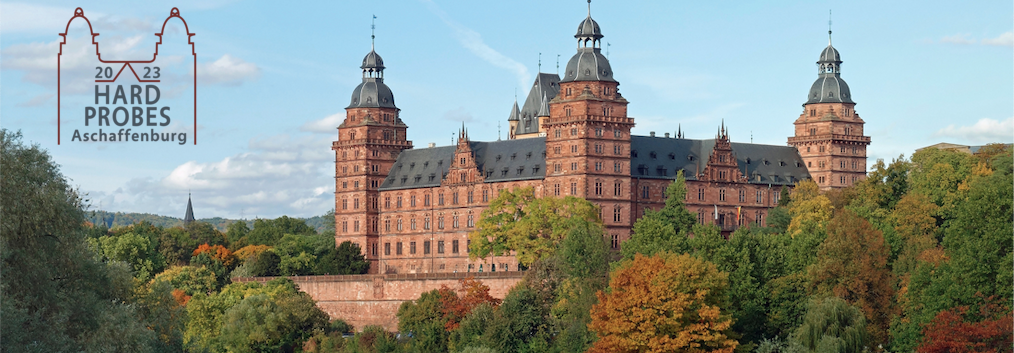Sprecher
Beschreibung
Measurements of the lightest open-charm baryon, $\Lambda_{\rm{c}}^{+}$, production can provide important information about the quark coalescence process of hadronization in the quark-gluon plasma (QGP). With strange quark yields being enhanced in the presence of the QGP medium, the production of $\rm{D}^{+}_{\rm{s}}$ is expected to be enhanced in heavy ion collisions if recombination plays an important role in the hadronization process. The high-luminosity data sets collected by the CMS experiment in 2018 have been used to measure $\Lambda_{\rm{c}}^{+}$ production via $\Lambda_{\rm{c}}^{+} \to \rm{p}^{+} \rm{K}^{-} \pi^{+}$ in the $p_{\rm{T}}$ range 3--30 GeV /c for pp collisions and 6--40 GeV /c for PbPb collisions in different centrality classes. The $\rm{D}^{+}_{\rm{s}}$ production is measured via the decay channel $\rm{D}^{+}_{\rm{s}} \to \phi \pi^{+} \to \rm{K}^{+}\rm{K}^{-}\pi^{+}$ in the $p_{\rm{T}}$ range 2--40 GeV /c in pp collisions and 6--40 GeV /c in PbPb collisions using the data sets collected by CMS detector in 2015. Results of the differential cross section of $\Lambda_{\rm{c}}^{+}$ and $\rm{D}^{+}_{\rm{s}}$, the ratios of $\Lambda_{\rm{c}}^{+}$ and $\rm{D}^{+}_{\rm{s}}$ over $\rm{D}^{0}$ yields in pp and PbPb collisions will be presented along with the nuclear modification factors.
Affiliation
CMS
| Experiment/Theory | CMS |
|---|
